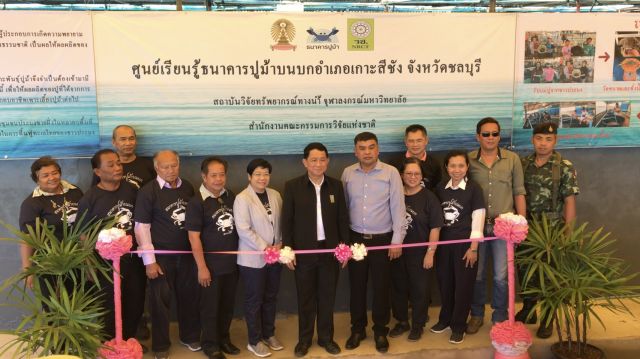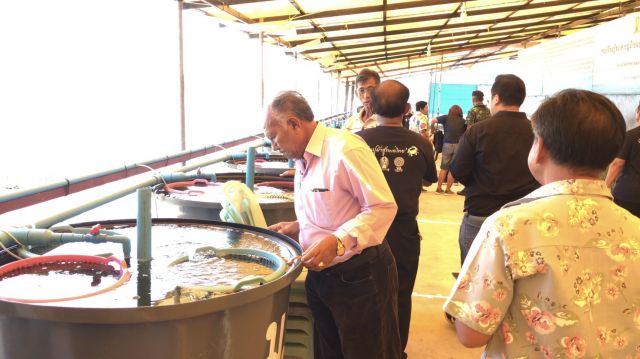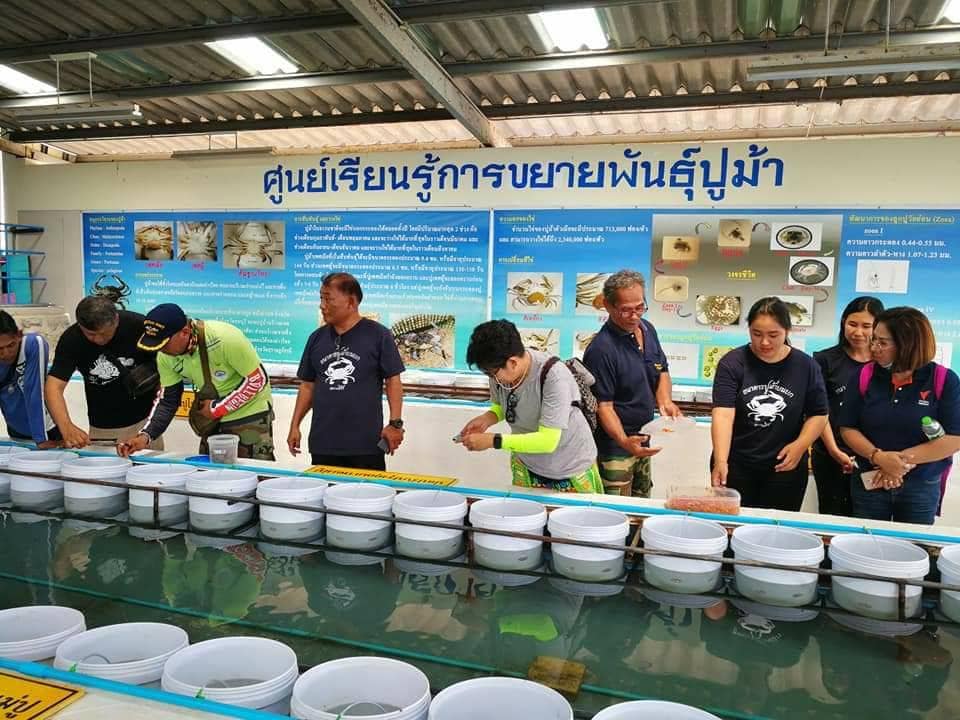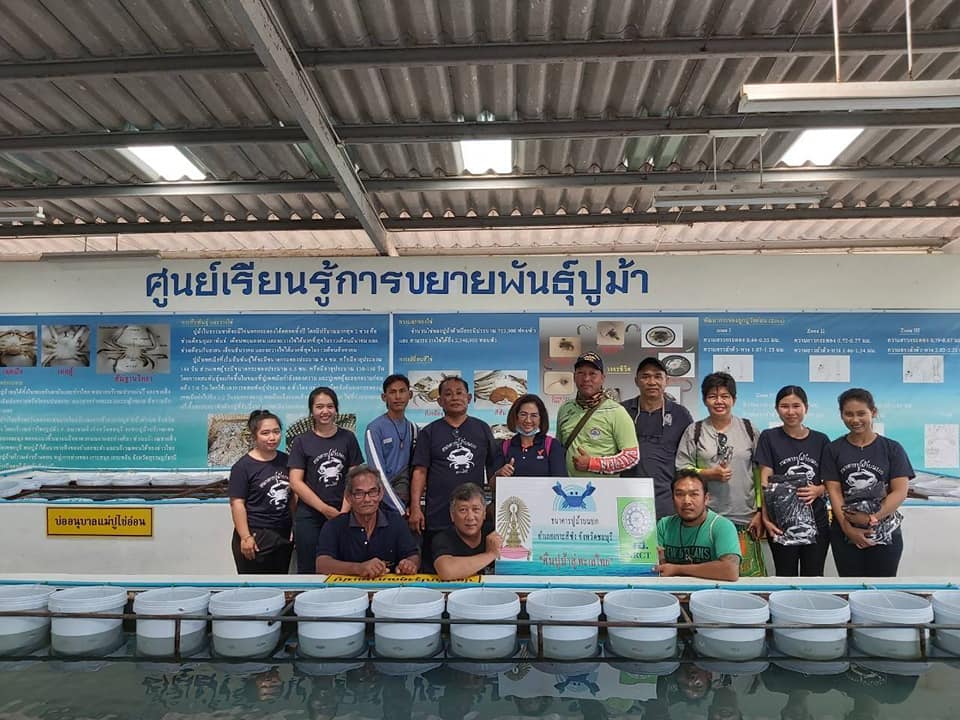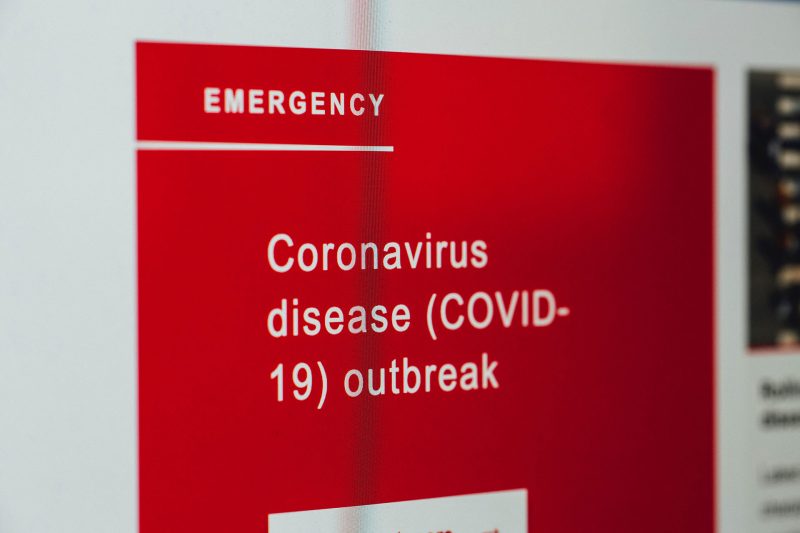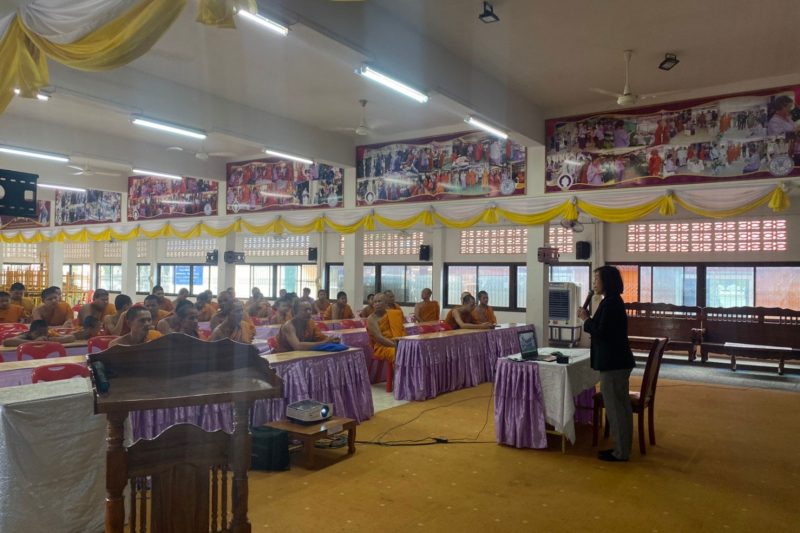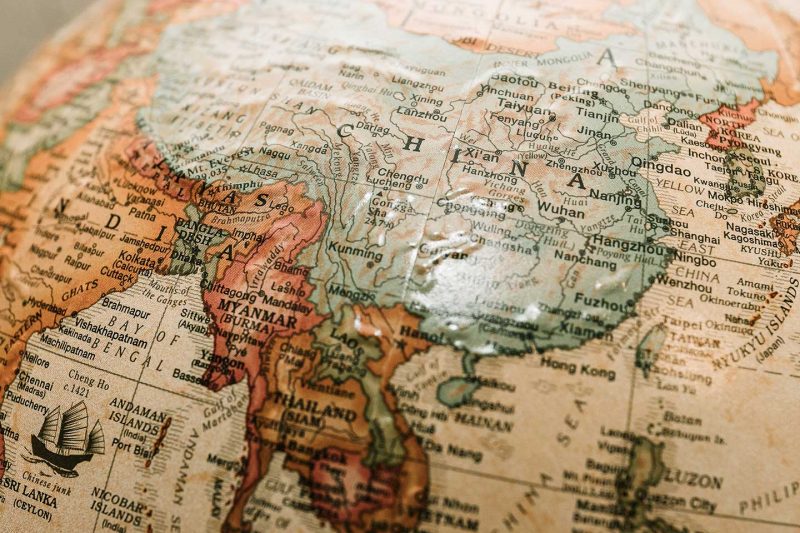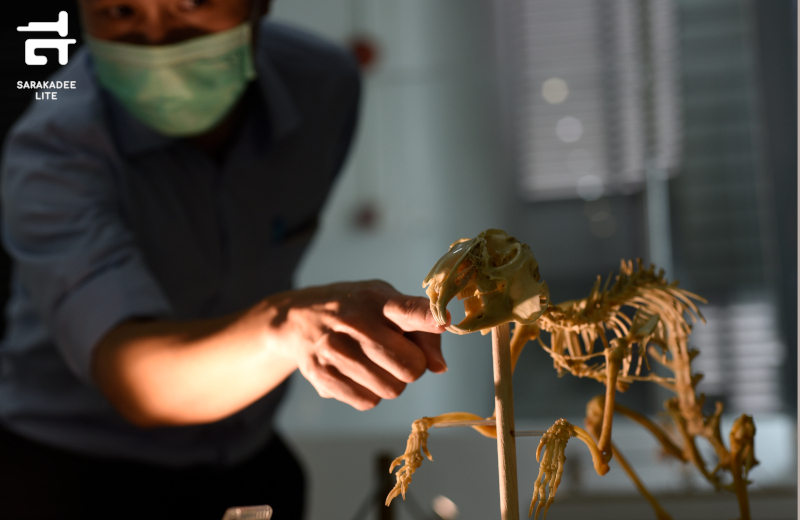Project on Si Chang island achieves remarkable 60% survival rate
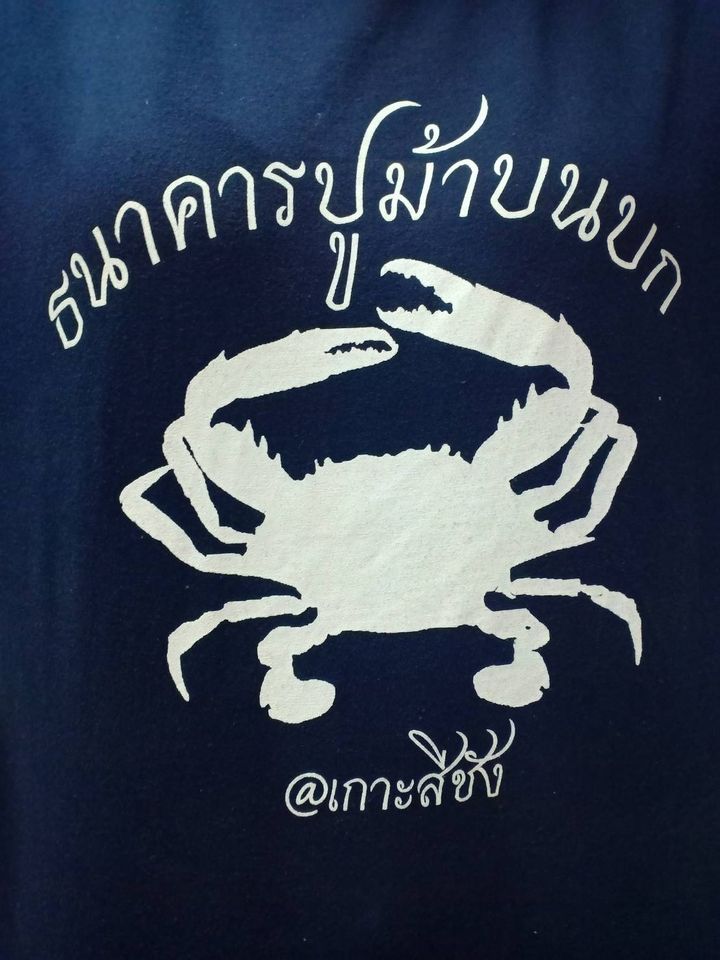
Take a guess: how many babies can 457 gravid (pregnant) crabs produce? 565,219,724 to be exact.
This astonishing figure represents the output from the Crab Bank Learning Center on Si Chang island in Chon Buri province. In June 2020, local fishers brought 457 blue swimmer crabs, known locally as poo ma, into the bank’s rearing cage for spawning. The gravid crabs were reared until they spawned and their eggs hatched into larvae. The young crabs were then allowed to grow to maturity before being released into the sea.
Here’s another impressive number: The culturing method used by the crab bank has improved the survival rate of young crabs from just 1% normally to between 40% and 60%. That has helped boost the depleting blue swimmer crab population and ensure healthy marine crab stocks, as well as the livelihood of local fishers.
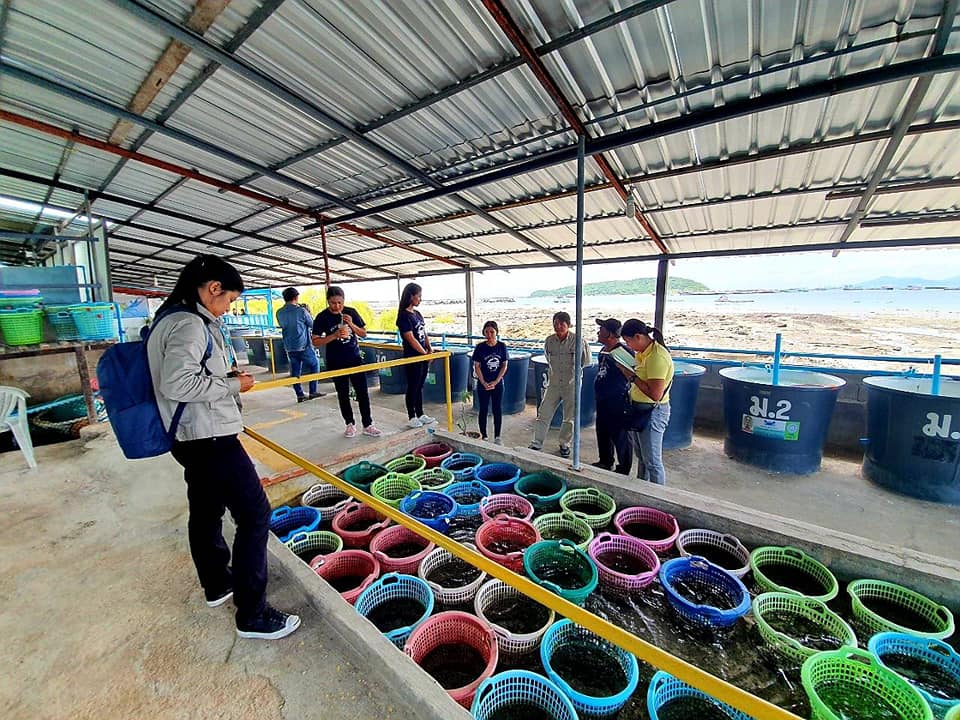
“Blue swimmer crab is a popular delicacy and in high demand, especially in tourist destinations such as Si Chang island. But they had become very costly due to decreasing natural stocks,” says Dr Nilnaj Chaitanawisuti of the Aquatic Resources Research Institute at Chulalongkorn University. “It’s also illegal for fishers to catch gravid crabs for sale.”
The idea of that crab bank was not well received at the beginning, acknowledges Dr Nilnaj. But after two years, everyone in the community has joined and “deposits” gravid crabs into the bank.
“They have begun to realize the significance of the project as they have witnessed the changes in the ecosystem,” he says. “They show us young crabs that they can now find easily near the shore. Before, these had been very rare, going back to the time of their forefathers.”
Blue swimmer crab is not only favorite food among Thais, but also an important economic aquatic animal generating income for coastal communities and the processed food export industry.
According to the Ministry of Agriculture and Cooperatives, Thailand produced 40,000 tons of blue swimmer crabs in 1997, but output declined significantly to 28,000 tons by 2011. To keep up with market demand, various unsustainable methods and destructive equipment were deployed, leading to overfishing. Unregulated crab fishing further drove the stocks into rapid depletion and there was a real risk of extinction at some point in the future.
The Aquatic Resources Research Institute, which has a marine research center and internship unit on Si Chang island, stepped in and laid out a coastal ecosystem restoration plan to manage the environmental impact on the blue swimming crab fishery. The Crab Bank Learning Center was then established with funding support from the National Research Council of Thailand.
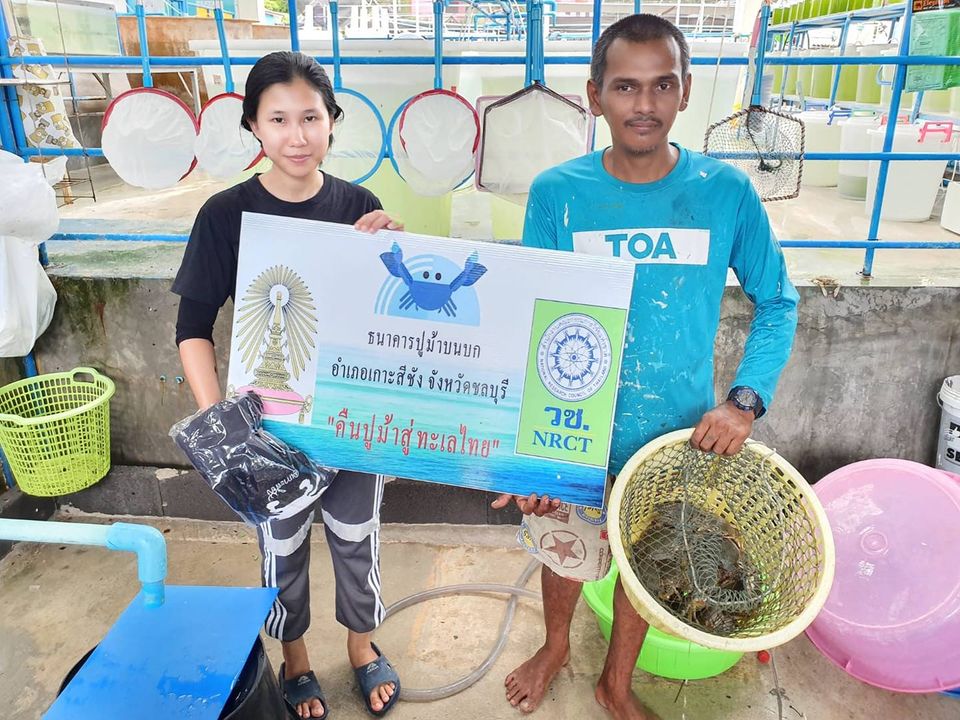
In addition to collecting and culturing gravid crabs for spawning before releasing them into the sea to increase the population in its natural habitat, the center acts as a knowledge transfer agency, sharing expertise with the community and interested members of the public.
In the past, working in partnership with local communities, the center had helped to establish 22 crab banks in Si Chang district with more than 3,500 fishers or 70% of the island population benefiting from the project.
The learning center has also become a model of community-based sustainable coastal ecosystem management. In cooperation with its network partners, Chulalongkorn University has scaled up the crab bank initiative to cover four other coastal communities: one in Bang Saray, Chon Buri; two in Ko Muk, in Trang; and one in Pak Khlong Tha Thong in Surat Thani.
Recently, in 2021 Crab Bank Learning Center on Si Chang Island in Chon Buri province has been developed into Sea Creatures Bank Learning Center Si Chang Island by local community for local community under the Royal Patronage of Her Royal Highness Princess Maha Chakri Sirindhorn.
BY
Aquatic Resources Research Institute, Chulalongkorn University
Chula Unisearch, Chulalongkorn University
Related articles:
Others
Healthier living for monks
Defusing ‘ticking time bomb’ of obesity in the clergy requires innovative approaches
- All media produced for viewing and download
- Heavy Thai monks seek enlightenment
- Why Thailand is putting its Buddhist monks on a diet
- In Thailand, ‘Obesity in Our Monks Is a Ticking Time Bomb’
- Thailand's Monks Eat Too Much and Are Costing the Country Millions in Health Care
- Almost half monkhood 'overweight'
- Thailand's overweight monks are put on a diet
Chulalongkorn Stages Future Sustainable Asia to Discuss Inequality
Chulalongkorn University in partnership with KFAS co-organizes the inaugural Bangkok Forum of “Future Sustainable Asia” to discuss “Integrating Knowledge for Social Sustainability.”

